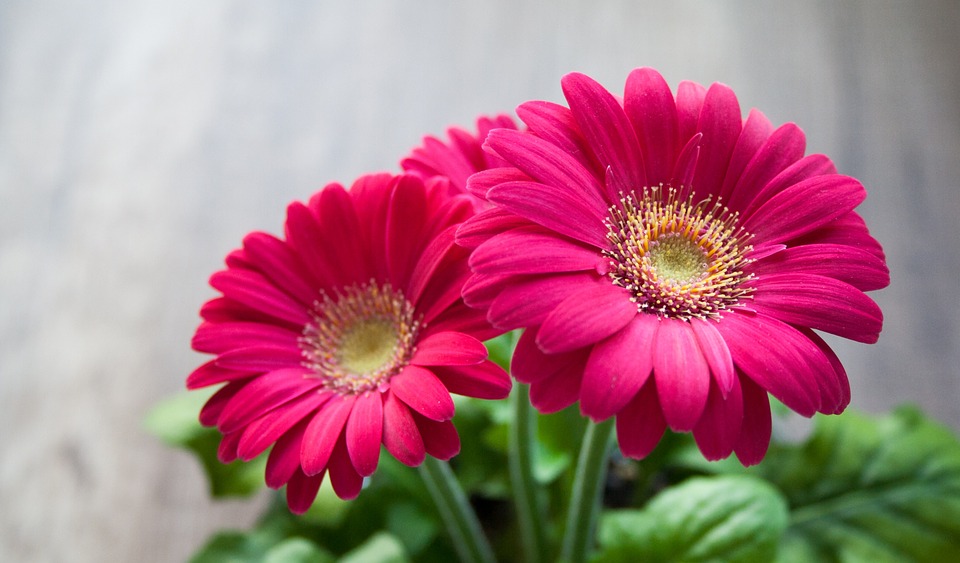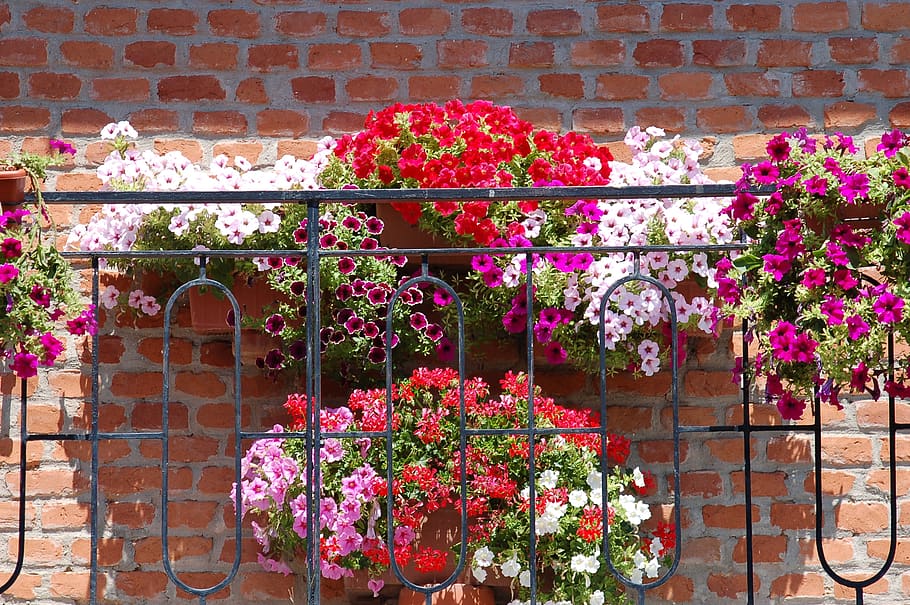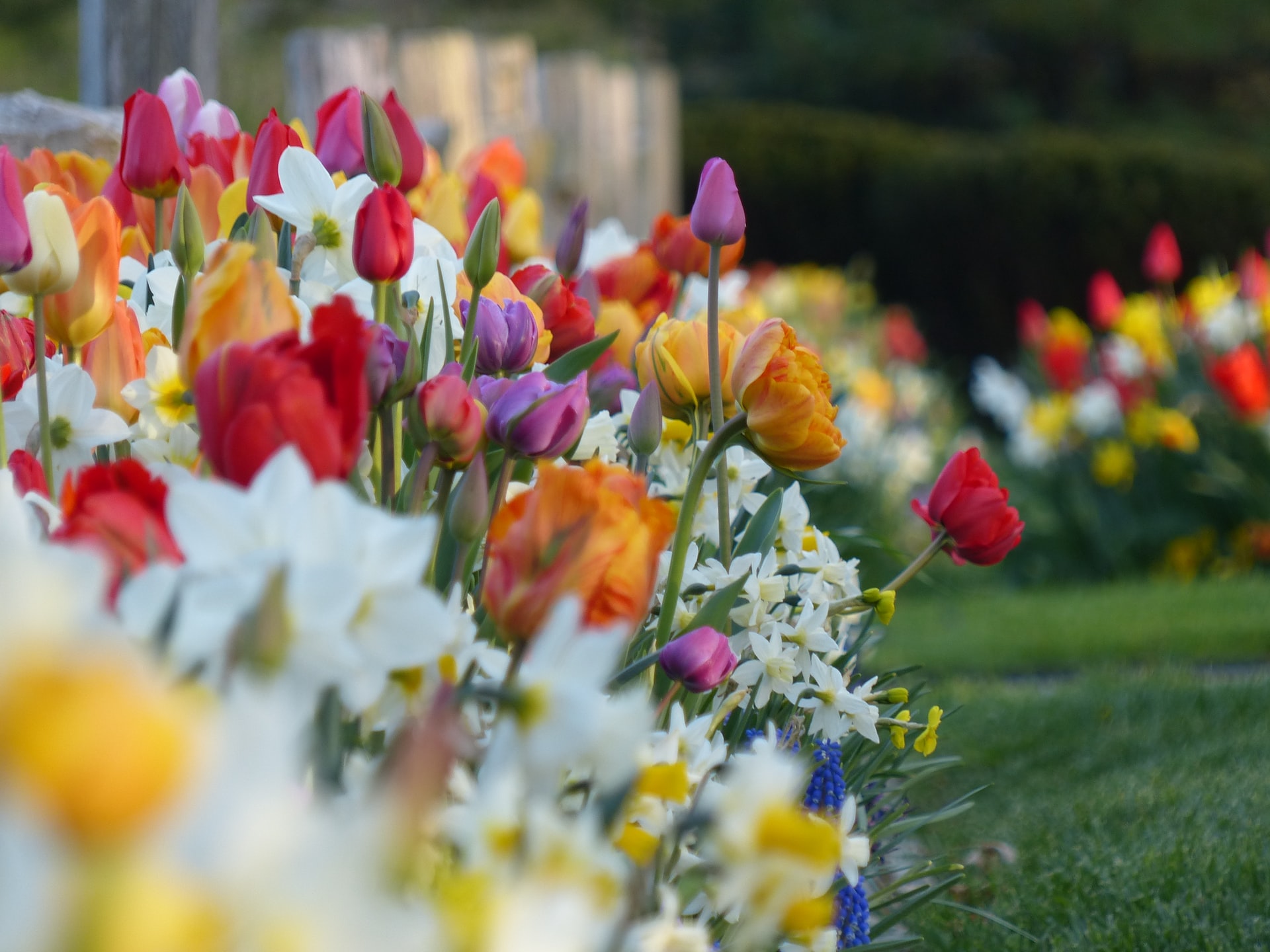Gerberas are plants that are very appealing both indoors and outdoors. In this article, we explain how to grow them and take care of yours so that they fill your patio or garden with color.
What are gerberas?
Gerberas are one of the most popular kinds of margaritas used by florists who make bouquets of flowers. They are flashy, large, and can be found in many different colors. Although in a bouquet they usually last a long time before they wilt, if you grow them yourself at home they will last much longer.
The bloom of this plant generally takes place in spring and summer. However, with a little care, the flowers can develop at any time of the year.
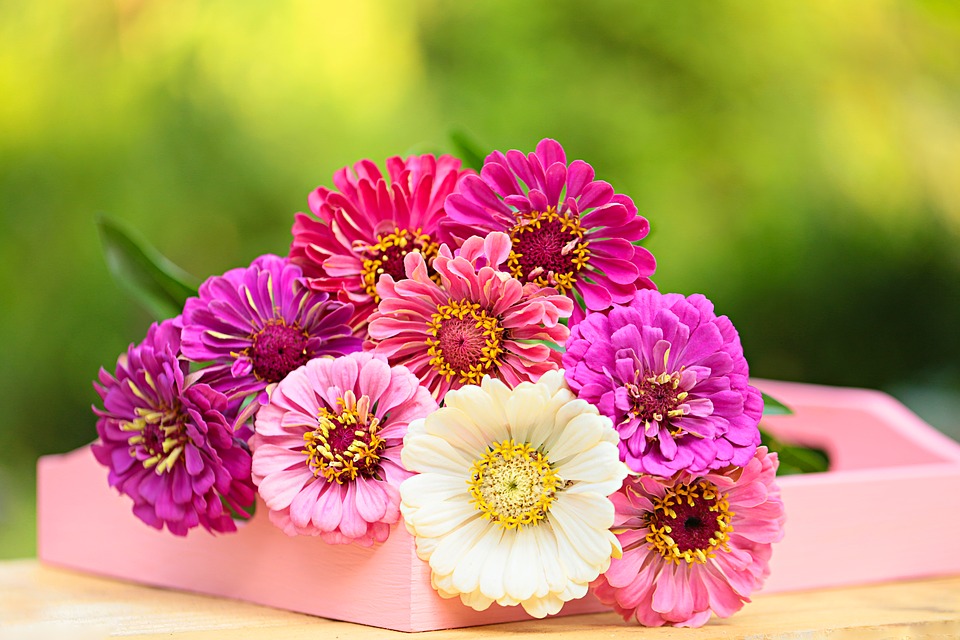
Gerbera is an ornamental plant that comes from southern Africa and belongs to the Asteraceae family. Although very similar, there are nearly 40 types of species, with a common characteristic: they are huge flowers with bright colors.
In nurseries and greenhouses, we usually find traditional species such as Gerbera jamesonii, Gerbera viridifolia, and the crossbreeding of the two that give more prominent and more resistant flowers.
The African daisy is a rosette-shaped flower that grows in a wide range of colors such as red, orange, pink, yellow, or white.
Where to grow gerberas?
Gerberas usually grow naturally in cold climates but in sunny environments. The flowers do not tolerate direct sunlight, but they should be in a bright place to receive enough light.
Growing gerberas at home is not an easy task. This plant needs adequate temperature and sunlight conditions and irrigation and special fertilizer to prevent it from wilting.
The ideal is to plant the seeds on a seedbed or transplant the seedlings or cuttings into a pot at the end of May to start to flower at the end of August.
Growing Gerberas in Pots
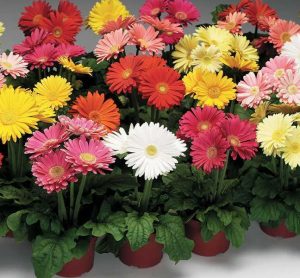
The pots for transplanting gerbera daisy cuttings must have a diameter of at least 12 cm, with a high body so that the roots have enough space. Place the pot in a sunny and airy place inside your home, turning it over every day so that it receives the same amount of light everywhere.
Growing Gerbera in the Soil
If you decide to grow gerberas in your garden, use a seedbed to get the young plants you can plant in the spring. Stir the soil well before planting to oxygenate it, adding substrate to make the roots healthy. Choose a place in the garden where there is no direct sunlight but where there is enough light for your plants.
Necessary Care for Gerberas
Once the plant starts to grow, the flowers begin to form. For the plant to develop correctly, it is necessary to take specific care of it, which will be rewarded in a brief period.
Substratum
Gerberas need a deep pot where they can spread their roots well. The substrate must be well aerated and with drainage that we can obtain by adding small stones at the bottom or mixed with the substrate if we cultivate in soil.
These are plants that need a large amount of organic matter, although we must ensure that the plant is not flooded and drowned and prevent the appearance of mold on the soil.
Temperature
These are plants that need a semi-warm climate. It is advisable to keep them in a sunny place, but never above 23ºC. Protect them from extreme heat, frost, or cold drafts.
If you decide to grow them outdoors, they will be better protected than if you place them near a wall or next to larger trees or shrubs.
Irrigation
Keep the soil of the stacker always moist, without letting it accumulate. It is advisable to water briefly several times a day, testing little by little until the soil is moist without expelling water. In spring and summer, you can water the gerberas by adding green plant fertilizer once a month, which will extend the life of each of its flowers. Use a water spray in the summer if the environment is arid, so that the plant will bloom and not die from the heat.
Fertilizer
Besides providing a quality substrate, your gerberas will need fertilizer only one year after being planted in a pot or the ground. Take advantage of spring to replenish the soil, changing it for a larger pot if necessary.
If you want your plants to grow faster and produce flowers, you can renew the substrate up to twice a year. In autumn and winter, it is advisable to interrupt the supply of fertilizer, reducing the watering frequency to give the plant a break so that it can flower more strongly in spring.
Do you have any other tips for taking care of gerberas? Don’t forget them in the comment section below!
